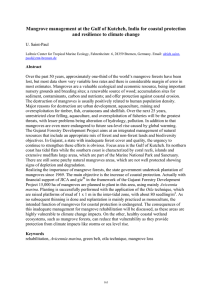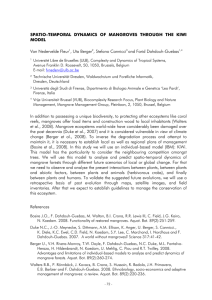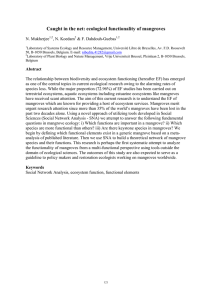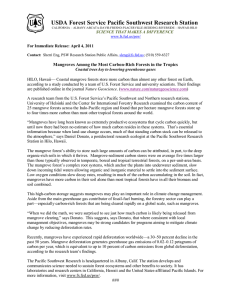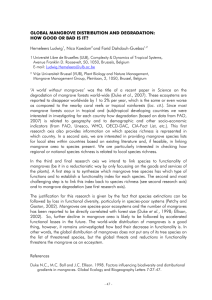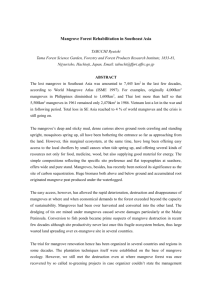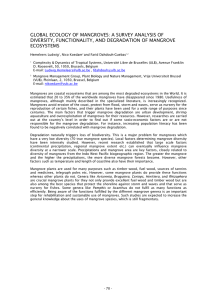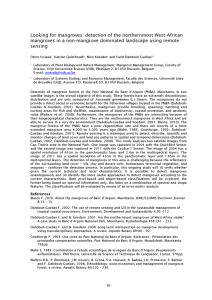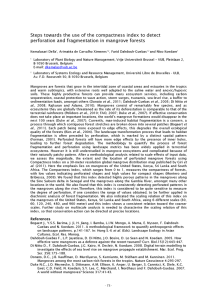Global spatial analysis of mangrove forest fragmentation
advertisement
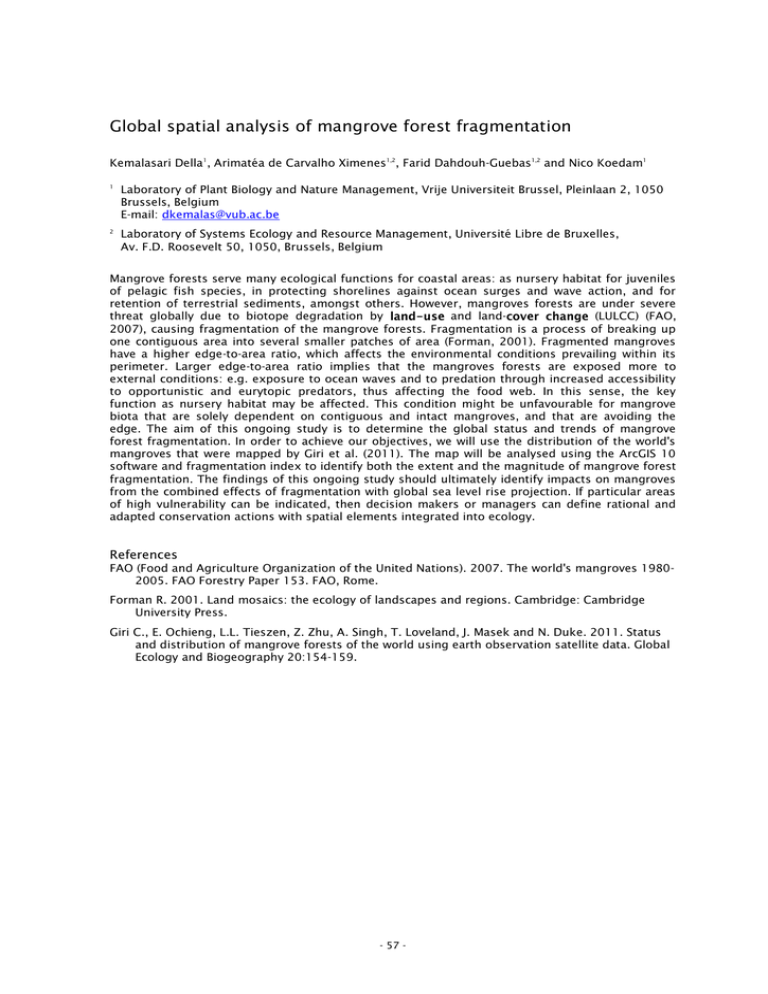
Global spatial analysis of mangrove forest fragmentation Kemalasari Della1, Arimatéa de Carvalho Ximenes1,2, Farid Dahdouh-Guebas1,2 and Nico Koedam1 1 Laboratory of Plant Biology and Nature Management, Vrije Universiteit Brussel, Pleinlaan 2, 1050 Brussels, Belgium E-mail: dkemalas@vub.ac.be 2 Laboratory of Systems Ecology and Resource Management, Université Libre de Bruxelles, Av. F.D. Roosevelt 50, 1050, Brussels, Belgium Mangrove forests serve many ecological functions for coastal areas: as nursery habitat for juveniles of pelagic fish species, in protecting shorelines against ocean surges and wave action, and for retention of terrestrial sediments, amongst others. However, mangroves forests are under severe threat globally due to biotope degradation by and land(LULCC) (FAO, 2007), causing fragmentation of the mangrove forests. Fragmentation is a process of breaking up one contiguous area into several smaller patches of area (Forman, 2001). Fragmented mangroves have a higher edge-to-area ratio, which affects the environmental conditions prevailing within its perimeter. Larger edge-to-area ratio implies that the mangroves forests are exposed more to external conditions: e.g. exposure to ocean waves and to predation through increased accessibility to opportunistic and eurytopic predators, thus affecting the food web. In this sense, the key function as nursery habitat may be affected. This condition might be unfavourable for mangrove biota that are solely dependent on contiguous and intact mangroves, and that are avoiding the edge. The aim of this ongoing study is to determine the global status and trends of mangrove forest fragmentation. In order to achieve our objectives, we will use the distribution of the world's mangroves that were mapped by Giri et al. (2011). The map will be analysed using the ArcGIS 10 software and fragmentation index to identify both the extent and the magnitude of mangrove forest fragmentation. The findings of this ongoing study should ultimately identify impacts on mangroves from the combined effects of fragmentation with global sea level rise projection. If particular areas of high vulnerability can be indicated, then decision makers or managers can define rational and adapted conservation actions with spatial elements integrated into ecology. References FAO (Food and Agriculture Organization of the United Nations). 2007. The world's mangroves 19802005. FAO Forestry Paper 153. FAO, Rome. Forman R. 2001. Land mosaics: the ecology of landscapes and regions. Cambridge: Cambridge University Press. Giri C., E. Ochieng, L.L. Tieszen, Z. Zhu, A. Singh, T. Loveland, J. Masek and N. Duke. 2011. Status and distribution of mangrove forests of the world using earth observation satellite data. Global Ecology and Biogeography 20:154-159. - 57 -
